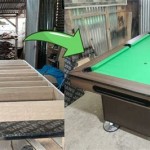Deer Proof Vegetable Garden: Essential Aspects to Consider
Creating a deer-proof vegetable garden may seem daunting, but with the right strategies, you can protect your precious plants from these foraging herbivores. Here are some essential aspects to consider when designing and maintaining a deer-repellent garden:
Choose Deer-Resistant Plants
Select plant varieties that are known to be unpalatable or less attractive to deer. These include:
* Vegetables: Eggplants, garlic, onions, peppers, asparagus, rhubarb * Herbs: Oregano, rosemary, lavender, thyme, mint * Flowers: Marigolds, cosmos, zinnias, daffodilsUtilize Physical Barriers
Physical barriers can effectively deter deer. Consider installing the following:
* Fencing: Construct a fence at least 8 feet high with small mesh or chicken wire to prevent deer from jumping over or squeezing through. * Motion-Activated Sprinklers: These devices emit jets of water when triggered by movement, startling deer and keeping them away. * Deer Netting: Drape netting over plants or entire sections of the garden to prevent access.Apply Chemical Repellents
Commercial deer repellents contain ingredients that deer find unappealing. Use these products according to the manufacturer's instructions:
* Liquid Spray: Apply it directly to plants or around the perimeter of the garden. * Granules: Sprinkle them around the base of plants or in areas where deer tend to congregate. * Egg Scent: Deer are averse to the smell of predator urine. Place egg-shaped products in the garden to mimic the presence of predators.Encourage Natural Predators
Attracting natural predators, such as owls and hawks, can deter deer. Consider providing safe nesting sites and water sources for these predators.
Establish a Deer-Resistant Landscape
Deer are less likely to approach a garden that appears well-maintained and devoid of hiding places. Keep the garden clear of dense vegetation, tall grass, and fallen fruit that may provide shelter for deer.
Additional Tips
* Rotate planting areas to prevent deer from establishing patterns. * Plant in large clumps rather than individual rows to make plants less vulnerable. * Mix deer-resistant and non-resistant plants to create confusion and reduce their attractiveness. * Observe deer behavior and adjust deterrents or planting strategies as needed. Remember, deer proofing is an ongoing process that requires persistence and a combination of techniques. By implementing these essential aspects, you can create a thriving vegetable garden that is safe from the hungry browsing of deer.
Deer Proof Garden Fence Ideas

How To Create A Pest Proof Vegetable Garden Finegardening

6 Tips To Create An Animal Proof Garden Fence The Seasonal Homestead

How To Create A Pest Proof Vegetable Garden Finegardening

Critter Resistant Vegetable Garden Plans Le Jardinet

Deer Proof Vegetable Garden Kit By Gardens To Gr

How To Build A Deer Proof Raised Bed Garden The House On Silverado

How To Create A Pest Proof Vegetable Garden Finegardening

Deer Proof Raised Bed Vegetable Garden With Trellis Entrance Way Building A Beds Diy

Deer Proof Gardens 4 Sure Fire Ways To Keep Out Of Your Garden








